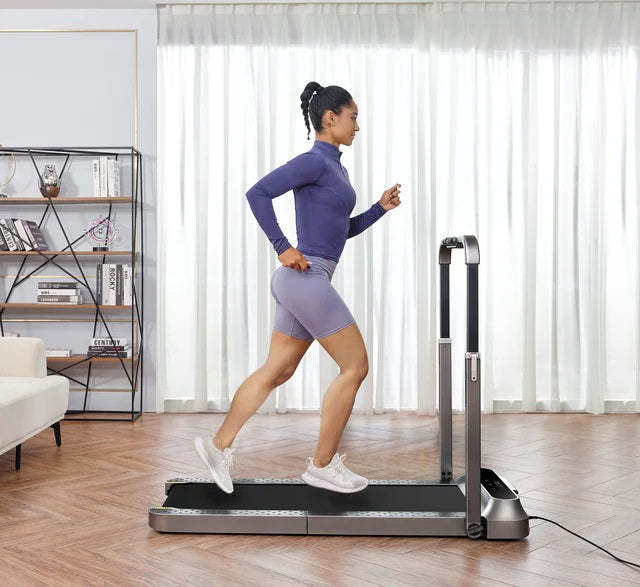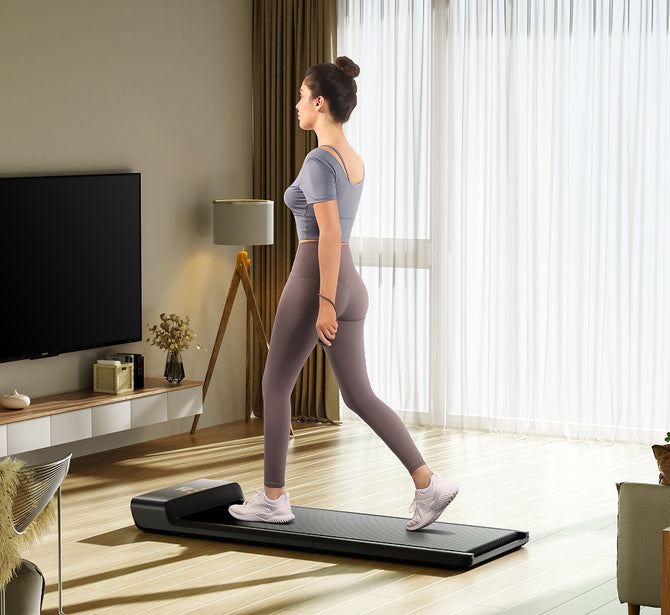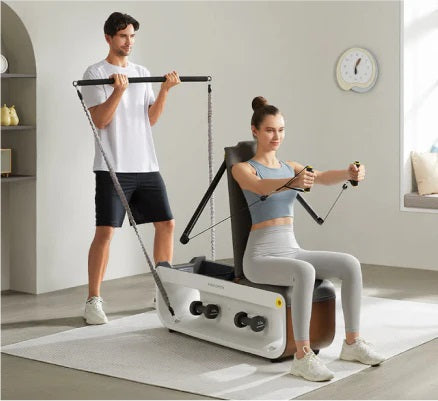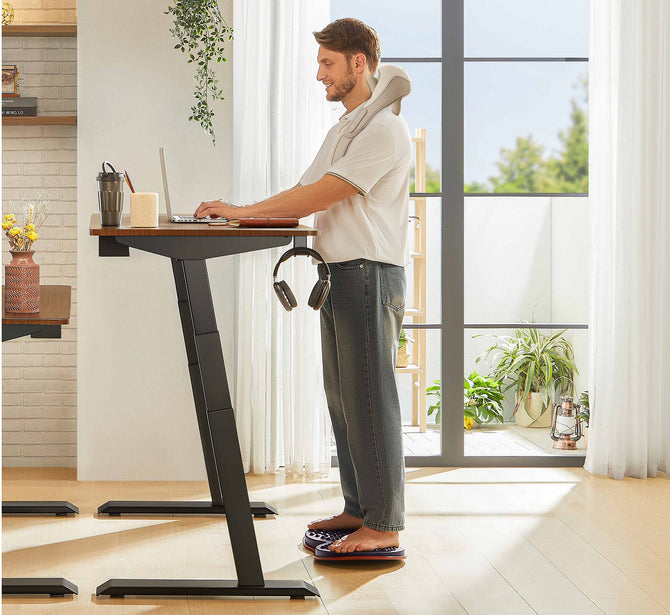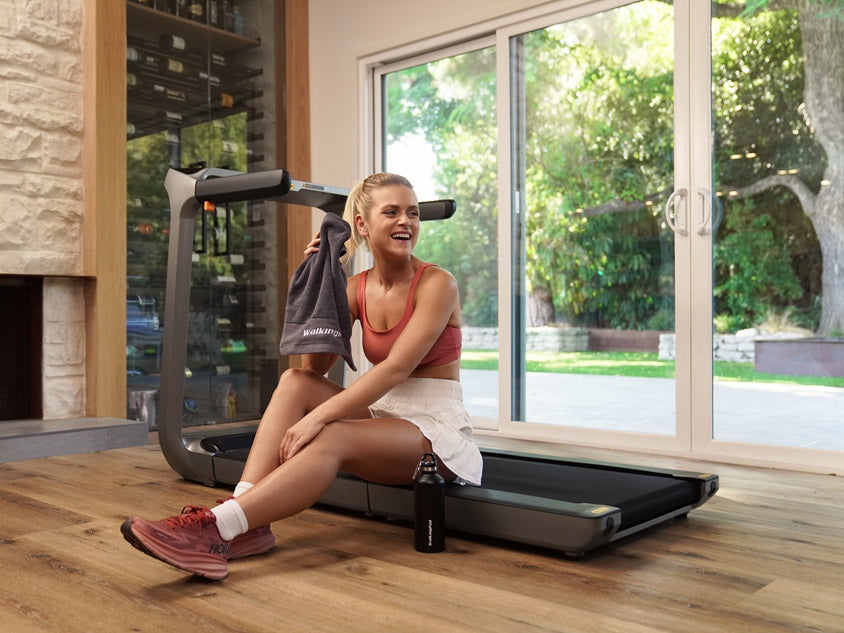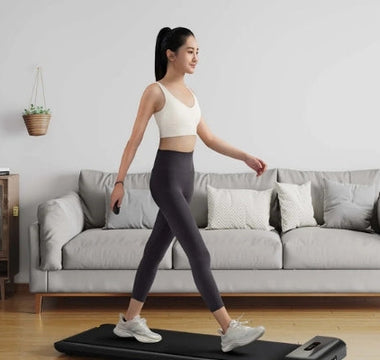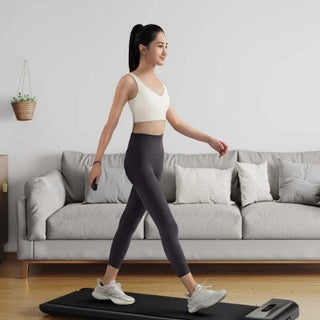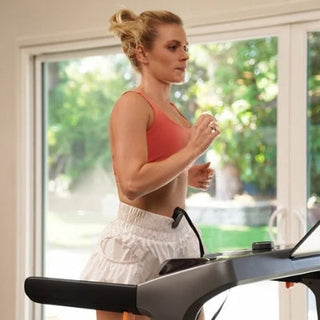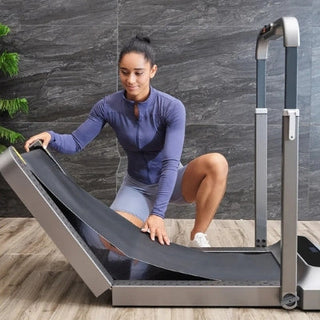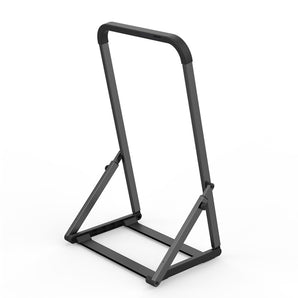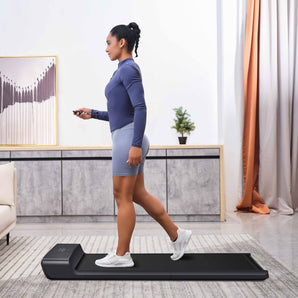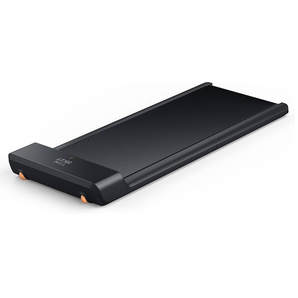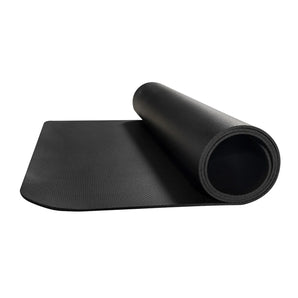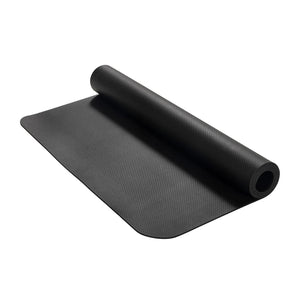Running is one of the most accessible ways to stay fit. You need little for it and you can do it almost anywhere, whether in the outdoors or inside on a treadmill. Yet many athletes wonder what's actually better: running on a treadmill or outside in the fresh air.
Both options have their own advantages and challenges, and what suits you best depends on your personal goals, preferences and circumstances. In this article you'll discover the main differences between running on a treadmill and outside, learn about the impact on your body and mind, and get practical tips to determine what's the best choice for you.
What's the difference between running on a treadmill and outside?
Whether you choose a run on the treadmill or a lap outdoors, the basics remain the same: you train your fitness, strengthen your muscles and stimulate fat burning. Yet there are clear differences between both forms of running.
These differences lie not only in physical strain, but also in the way you move, how your muscles work and how you experience the training mentally. Below you'll read the main distinguishing factors that determine how your body and mind respond to running on a treadmill compared to running outside.
Running technique
When running outside you actively move yourself forward by pushing off against the ground. You mainly use the posterior chain: the hamstrings, glutes and calves together deliver the power to propel your body forward. This requires a natural running movement where your rhythm, stride length and posture are continuously adjusted to the terrain and conditions. The movement feels more dynamic and demands more of your stability and coordination.
On a treadmill this works slightly differently. The belt automatically moves under you, so you need to deliver less force to move forward. This makes the push-off shorter and the stride often slightly smaller. Your posterior chain is activated less and the emphasis is more on the forward movement of your legs. This makes running on a treadmill technically somewhat simpler, but also less realistic compared to running outside.
Load on joints and muscles
The difference in load between running on a treadmill and outside has much to do with the surface. The treadmill has a cushioning effect that absorbs shocks, putting less strain on your joints, tendons and bones. This makes it an excellent choice for people recovering from injury or sensitive to overload. Moreover, you run on a flat and stable surface, which reduces the risk of sprains or unexpected strain on small stabilizing muscles.
Outside, on the other hand, the surface is constantly changing. Whether you run on asphalt, grass, sand or forest paths, every step requires adjustment from your muscles and joints. This provides broader muscle activation, especially in your ankles, calves, hips and core. Through natural variation you not only strengthen your muscles, but also your tendons and stability. The disadvantage is that the impact on hard surfaces like concrete or asphalt is greater, which can lead to overload or injuries over time if your body isn't properly prepared.
Resistance and environment
When running outside, you deal with natural elements like wind, temperature differences, inclines and surfaces that constantly change. This variation ensures your body must continuously adapt, making the training more realistic and challenging. Wind can provide extra resistance, for example, while a hilly course engages your muscles differently. Weather also plays an important role: running in cold, heat or rain always requires different effort from your body.
On a treadmill you train in a controlled environment. The temperature remains constant, there's no wind or rain and the surface is always the same. This makes it easier to accurately regulate your speed, incline angle and training intensity. Especially with interval training or recovery runs, that's a major advantage. The disadvantage is that the absence of natural resistance and variation makes the training somewhat less functional for outdoor situations.
Mental experience
The mental experience of running on a treadmill differs significantly from running outside. On a treadmill you stay in one place, which can feel monotonous for many people. The constant environment, monotonous sound and lack of distraction can make the training mentally heavier than outside. Yet it also offers advantages: you can stay focused on your pace, heart rate and technique without worrying about traffic or obstacles.
Running outside continuously stimulates your senses. The fresh air, changing landscape and presence of nature or urban environment provide more variety and mental relaxation. Research shows that outdoor exercise has a positive effect on your mood, concentration and motivation. Moreover, outdoor running can have a social dimension, for example if you train together with friends or a running group. This makes outdoor running often mentally more refreshing and stimulating than training on a treadmill.
Pros and cons of running on a treadmill and outside
Both the treadmill and running outside have their own strengths and weaker points. Which suits you better depends on your goal, training level and personal preference. Below you'll read more about the main pros and cons of both options.
Running on a treadmill
Running on a treadmill is ideal if you like having control over your training or prefer training indoors. Modern treadmills, like those from WalkingPad, also make it possible to exercise comfortably at home without taking up much space. Below you'll read the main advantages and disadvantages of running on a treadmill.
Advantages of running on a treadmill
- You train in a controlled environment with constant temperature, without influence of wind, rain or cold.
- Speed is easy to adjust, which is ideal for interval training or targeted workouts.
- The treadmill surface is cushioned and absorbs shocks, putting less strain on your joints.
- Perfect for beginners or people recovering from injury, thanks to the lower impact and stable running surface.
- Easy to train consistently, regardless of weather or time of day.
Disadvantages of running on a treadmill
- The movement is less natural because the belt runs under you, which reduces activation of certain muscles.
- Training can feel monotonous, especially during longer sessions without visual distraction.
- You train less on stability and coordination because the surface is flat and predictable.
- The absence of wind resistance and terrain variation makes training somewhat less realistic compared to outdoor running.
Running outside
Running outside is a natural and varied way to stay active. It offers a sense of freedom, stimulates your senses and brings you in contact with your environment. Due to variation in surface and weather conditions, every training is unique. Below you'll read the main advantages and disadvantages of running outdoors.
Advantages of running outside
- You train in fresh air, which contributes to better mood, more energy and a stronger immune system.
- Natural resistance from wind, terrain and elevation differences makes your training more intensive and realistic.
- You use more muscle groups because your body continuously adapts to uneven terrain and changing conditions.
- Outdoor running stimulates your concentration, memory and mental wellbeing thanks to environmental stimuli.
- The social aspect of running together or participating in local running groups can provide extra motivation.
Disadvantages of running outside
- Weather can affect your training; cold, rain or extreme heat can be less pleasant or reduce your performance.
- The chance of injuries is slightly higher due to harder surface and unevenness in terrain.
- It's harder to maintain a consistent pace due to wind, hills or obstacles along the way.
- Depending on your living environment, it can be difficult to find safe or suitable routes.
What's better: running outside or on a treadmill?
Whether running outside is better than on a treadmill mainly depends on your personal goals, preferences and circumstances. Both forms have their own advantages that can complement each other well. Running outside offers more natural variation, strengthens your stability and gives you a mental boost through fresh air and changing environment. It's the ideal choice if you're training for competitions, love being in nature or simply enjoy the feeling of freedom.
Running on a treadmill is ideal for controlled training. You can set your speed, distance and incline angle exactly, making it easier to achieve specific goals. Additionally, the lower impact is beneficial for recovery or injury prevention. A treadmill is also perfect for those who like to train at times when it's too cold, dark or wet outside.
In practice there's no absolute winner. The best approach is often a combination of both. Use the treadmill for technical or interval training and to stay consistent in winter months. Run outside to improve your strength, endurance and mental freshness. This way you benefit from the advantages of both worlds and build a balanced running routine that keeps you fit, motivated and injury-free.
Improve your running experience with a WalkingPad treadmill
Want to combine the convenience of indoor training with a natural and comfortable running experience? With a WalkingPad treadmill you take your running or walking routine to a higher level. Our innovative, foldable treadmills take up little space and are ideal for use at home or in the office. This way you can stay active at any time of day, regardless of weather or your schedule.
WalkingPad treadmills offer a quiet, smooth running experience with adjustable speeds and smart features that make your performance insightful. Whether you want to walk leisurely on one of our walking pads or train specifically for your next running goal, there's always a model that fits your lifestyle. Discover how easy it is to move more and increase your energy with a WalkingPad.
